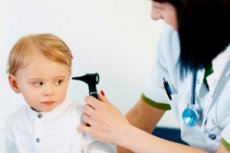Hearing test
Last reviewed: 23.04.2024

All iLive content is medically reviewed or fact checked to ensure as much factual accuracy as possible.
We have strict sourcing guidelines and only link to reputable media sites, academic research institutions and, whenever possible, medically peer reviewed studies. Note that the numbers in parentheses ([1], [2], etc.) are clickable links to these studies.
If you feel that any of our content is inaccurate, out-of-date, or otherwise questionable, please select it and press Ctrl + Enter.

When examining deafness, determine the side of hearing loss, its degree and cause. At inspection of such patient it is necessary to solve at least two questions: whether this deafness is curable or not and whether it is a symptom of some other lesion (for example, neuromas of the auditory nerve). But first of all, if you lose your hearing, you should exclude the presence of a dense sulfur plug in the external auditory canal, which should be removed in this case.
Tests using a tuning fork
Use a tuning fork with a frequency of 512 Hz.
The test is Rinne. If the patient hears normally, the air conduction of sound waves is better than that of bone tissue. The tuning should be kept lateral from the external auditory canal, and its teeth are located at one level and parallel to the entrance to the external ear, and when studying the acoustic conductivity of bone tissue, the tuning fork leg is placed on the mastoid process. If the air conduction of sound is better than the bone, then they say about the positive test of Rinne. This test is positive for sensory-neural (perceptual) hearing loss. Negative test Rinne (bone sound conductivity is better than air) indicates that there are obstacles to conducting sound waves to the tympanic membrane. If, on the one hand, a pronounced or complete sensory-neural deafness is diagnosed, a false positive test of Rinne may be obtained, since the cochlea of the other ear can perceive sound due to the skin conductivity. In such cases, the patient should be placed in the Barani noise chamber, which allows to exclude sound penetration to the other ear during the test.
Weber's test. The handle of the vibrating tuning fork is placed in the middle of the forehead of the patient. The doctor should ask the patient what ear he hears the sounding tuning fork. Sound is better perceived by the affected ear with a "conductor" (when sound waves are not conducted through the outer ear) deafness, but with the contralateral ear with sensory-neural deafness, and is perceived from both sides equally if the patient has no hearing impairment.
Audiometric tests
These tests allow you to quantify the extent of hearing loss and its side. With audiometry, a clean tone is used by electronic equipment that produces sounds of different strengths with a frequency of 250-8000 Hz. The test is carried out in a soundproof room. The patient should say when he begins to hear a sound whose intensity is recorded in decibels (dB). This is how the air sound conductivity is recorded. The threshold of bone conduction is also recorded, but using a sensor placed on the mastoid process.
Timpanometry (acoustic resistance)
With this method, the probe completely closes the external auditory meatus, and, by maneuvering with pressure, the probes guide it into the external auditory canal, after which the flexibility of the tympanic membrane is recorded. The normal tympanic membrane gives an even dome-shaped curve. In the presence of fluid in the middle ear, this curve becomes flattened. If the ear perceives a sharp intense sound (more than 85 dB), then a notch appears on the curve, since the stapes muscle is shortened (which is mediated through the VII cranial nerve). In 5% of the population, there is no stenosis reflex (with a normal hearing aid).
Speech audiometry
This method determines the ability of the patient to distinguish individual words in a speech pronounced with a loudness exceeding the threshold of audibility. This study can answer the question whether the sensory-neural defect is localized in the cochlea or in the auditory nerve; it also allows you to make a prediction whether it is possible to help the patient or not.
Assessment of the ability to hear from children
For carrying out the hearing tests described above, children need contact with them. In children up to 6 months of age, the development of hearing is judged by the way they flinch or blink in response to a sound stimulus. At the age of 6 months, they already turn the head in response to a particular sound. At the child in the age of more senior than 3 years it is already possible to spend audiometry.
 [8]
[8]

